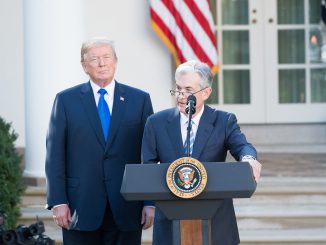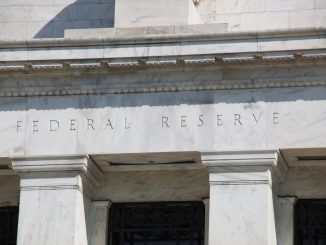While financial market participants continued to sell Treasury bonds thinking that the Fed is out of the game, New York Federal Reserve President WIlliam Dudley gave no indication to suggest that either QE3 was off the table or just around the corner. Still, he was clearly concerned that the recovery is more fragile than the data would have us believe, suggesting that he would leap relatively quickly into additional easing if the economy faltered.
While Dudley certainly did not ignore the improved tenor of economic data in recent months,
The incoming data on the U.S. economy has been a bit more upbeat of late, suggesting that the recovery may be finally establishing a somewhat firmer footing.
he also suggested caution:
While these developments are certainly encouraging, it is far too soon to conclude that we are out of the woods. To begin with, the economic data looked brighter at this point in 2010 and again in 2011, only to fade as we got into the second and third quarters of those years.
In particular, he pointed to the moderate weather as a factor in the recent numbers:
Moreover, the United States has experienced unusually mild weather over the past few months, with the number of heating degree days in January and February about 17 percent below the average of the preceding five years. While this reduces the amount that households and businesses must spend for heating, I suspect that it temporarily boosts economic activity overall.
In the question and answer period (via the WSJ), Dudley commits to nothing but a data dependent policy:
Dudley was asked by an audience member what he expects will be the future path of interest rates. “We will continue to assess what’s appropriate” for monetary policy, he answered, saying “if the economy were to change in a meaningful way, obviously we’d change” the current plans for interest rates and other stimulus efforts.
Specifically on QE3, via Reuters:
“Nothing has been decided,” he said of QE3, in which the Fed would make large-scale asset purchases in an attempt to lower rates and give the economy another controversial shot of adrenaline.
“It all depends on how the economy evolves,” Dudley added. “It’s about costs and benefits, and if we get to a point where we think the benefits of another program of QE outweigh the costs, then we’ll certainly do so.”
More interesting, in my view, were his comments on potential growth:
To put the recent pace of growth into perspective, we believe that the economy’s long-run sustainable growth rate (what economists call the potential growth rate) is around a 2 1/4 percent annual rate. We need sustained growth above that rate to absorb the substantial amount of unused productive capacity. Thus, our recent growth rates are barely keeping up with our potential.
The 2.25% rate caught my eye, as it was slightly below the 2.3-2.6% range for longer term growth in the most recent Fed projections. And that itself was a downgrade from the 2.4-2.7% November projection.
At this point, it becomes a little tricky:
Although the sharp decline in the unemployment from 9 percent last September to 8.3 percent in February suggests we are doing better than that, it is important to recognize that about half of that decline was due to a declining labor force participation rate. In fact, had the labor force participation rate not declined from around 66 percent in mid-2008 to under 64 percent in February, the unemployment rate would still be over 10 percent.
So half the decline in the unemployment rate since last September was due to falling labor force participation, while the other half was the result of growth slightly above potential. GDP growth in the second half of last year averaged 2.4%, slightly above Dudley’s estimate of potential GDP, and enough to bring down unemployment somewhat.
Looking back to what Dudley said last November:
After a very weak first half, when GDP growth was less than 1 percent, economic activity has strengthened somewhat and inflation pressures are starting to ease. Growth in the third quarter is currently estimated to be 2.5 percent, and recent indicators suggest growth in the fourth quarter could be somewhat higher…However, as we look toward 2012, the U.S. economy continues to face several obstacles to a robust recovery. Accordingly I expect growth of about 2.75 percent for 2012…One summary statistic says it all—the unemployment rate is unacceptably high at 9 percent. Given my outlook, the decline of unemployment over the next year is likely to be modest…To sum up, growth has picked up modestly in the second half of 2011, but not enough to bring unemployment down.
Last fall, Dudley thought that growth somewhat above 2.5% would not bring unemployment down, while 2.75% would only have modest impacts. That suggests an estimate of potential growth around 2.6-2.7%. Now we only need to cross the 2.25% mark to bring unemployment down. That is a fairly rapid adjustment, and not just due to slower labor force growth:
Also, it appears that productivity growth has slumped recently. Although that means that a given amount of growth translates into bigger employment gains, it certainly is not an unmitigated good development.
This isn’t sounding so good – growth is weak, but the hurdle is lower. Does this mean that Dudley is less dovish than widely suspected? I don’t think so. Another excerpt from Dudley’s speech today:
More importantly, real economic activity has yet to be strong enough on a sustained basis to make a big dent in the overall amount of slack in the U.S. economy. While it is true that growth was stronger in the fourth quarter, most of that growth was due to inventory accumulation. Growth of final sales was actually quite weak. Historically, a quarter in which inventory investment makes a significant growth contribution is typically followed by a quarter in which that growth contribution is modest or even negative. That appears to be what is shaping up for the first quarter of this year.
This I find just plain irritating, as it sure sounds like he is saying that even though potential output growth has slowed, the existing gap remains unacceptably wide. If so, why is a policy change dependent on incoming data as he says in the Q and A? This is somewhat more amazing given his lack of faith in the quality of the recovery:
Based on available data, current expectations are that real GDP will expand at around a 2 percent annual rate during the first quarter of 2012. Despite the increase of light vehicle sales, overall consumer spending has been sluggish. While growth of retail sales in February was reasonably strong in nominal terms, it was considerably less impressive when the large increase of gasoline prices that occurred that month is taken into account. Based on data for the first half of March, gasoline prices are continuing to move higher which will further sap consumers’ real purchasing power. And growth of business investment spending, which was quite strong in the second and third quarters of 2011, entered the new year with little forward momentum.
Not exactly a resounding endorsement of the economy. Sounds like he views the downside risks as the greater concern. But apparently not enough that the costs of additional easing (which I think amounts to the perception that QE is an inflationary nightmare waiting to happen) outweigh the benefits.
Bottom Line: Dudley presents a rather sober view of the US economy – signs of life are hopeful, but he isn’t counting on their sustainability in any way, shape, or form. His estimate of potential output growth is falling, but the existing gap remains wide. The gap coupled with his obvious lack of enthusiasm for the quality of the recovery should point him in the direction of QE3 sooner than later. But there is nothing to suggest that such a move is imminent barring a deterioration of the data – he seems to make this clear in the Q&A. He seems ready to stick with the wait and see approach to policy, possibly because the declining potential growth rate makes him somewhat concerned the output gap could close faster than he would expect, but it sure doesn’t sound like it would take too much disappointment in the days ahead to push him to support going back to the monetary well for another round of easing.
Disclaimer: This page contains affiliate links. If you choose to make a purchase after clicking a link, we may receive a commission at no additional cost to you. Thank you for your support!





Leave a Reply